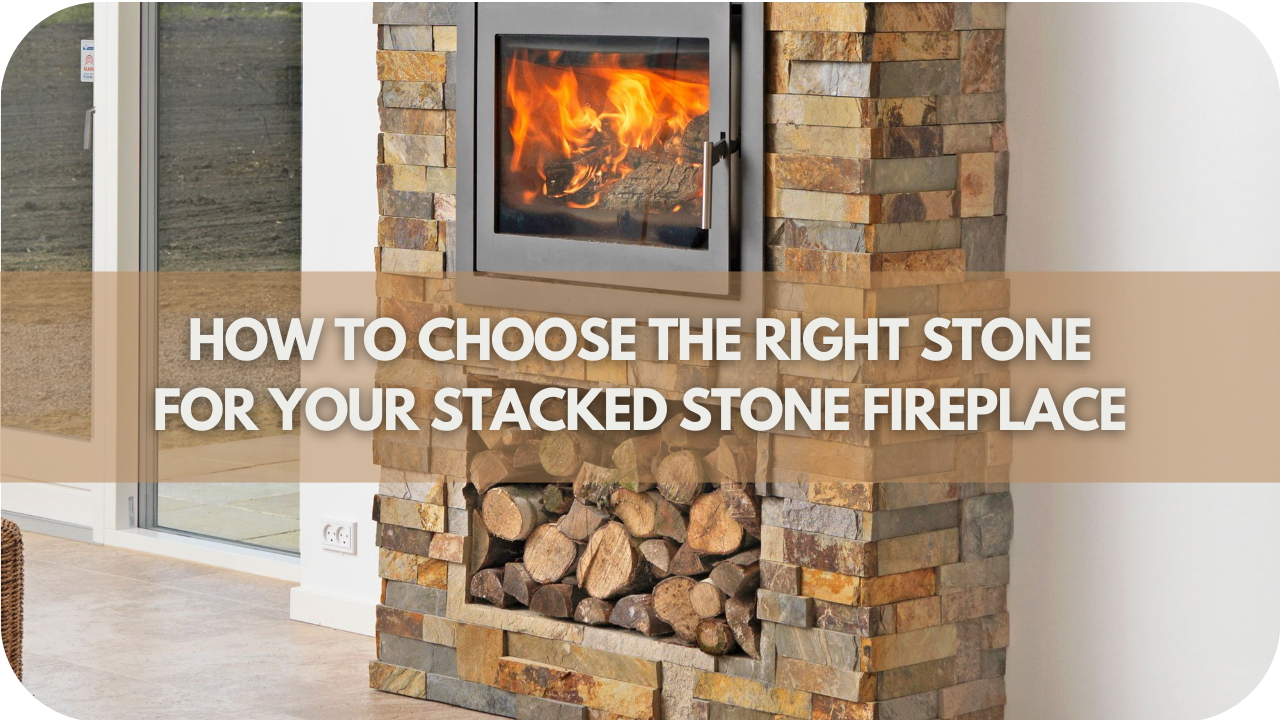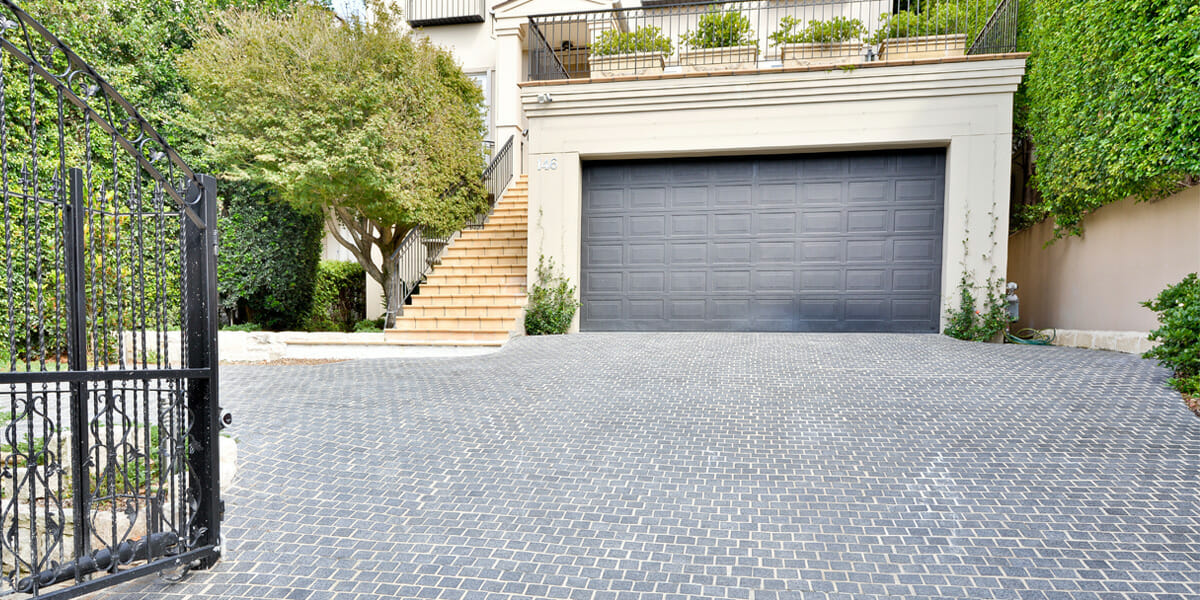
A stacked stone fireplace adds charm and sophistication, creating a stunning centrepiece for any room.
However, selecting the perfect one can be challenging, given the wide variety of stones available. Which stone will best suit your vision?
Whether you prefer a timeless, rustic appeal or a sleek, modern aesthetic, the right stone will elevate your fireplace to a new level. Keep reading to explore expert guidance on choosing the perfect stone to make your fireplace stand out in style.
1. Consider the Fireplace Style
The fireplace style is essential for creating a cohesive look when choosing the suitable stone for your stacked stone fireplace. Start by identifying your fireplace’s style—traditional, modern, rustic, or contemporary.
Stones like granite or limestone are great for traditional fireplaces, offering timeless elegance and warmth. To understand their qualities, check out our in-depth guides on Granite and Limestone.
Granite offers durability and a classic appeal, while limestone adds a natural, inviting texture. Granite is a sleek and versatile option for modern or contemporary fireplaces that enhances minimalist designs.
Limestone or marble can elevate the rustic charm of a country-style fireplace. With its sophisticated veining, Marble creates a beautiful contrast that complements a classic look.
Matching the right stone with your fireplace style will ensure a seamless interior blend, enhancing its visual appeal and functionality.
2. Stone Texture and Finish
Choosing the right stone texture and finish is pivotal in defining the look and feel of your stacked stone fireplace. The stone’s texture can dramatically influence the fireplace’s aesthetics and functionality.
Limestone offers a rough, natural texture that provides a rustic and earthy appeal. It adds depth and character to your fireplace, ideal for creating a rugged, outdoor feel even in an indoor setting.
Conversely, if you prefer a smoother, polished finish, marble provides a sleek, refined look. Its glossy surface reflects light beautifully, making the fireplace a focal point of elegance.
Granite provides a range of finishes, from honed to polished. A honed finish offers a matte appearance that hides fingerprints and smudges, while a polished finish enhances the stone’s natural colours and patterns, adding a touch of sophistication.
Selecting the right texture and finish complements your design style and impacts maintenance. A rough texture may require more frequent cleaning to avoid trapping dust, while a polished surface is more accessible to wipe clean and maintain its shine.
3. Colour and Pattern
Choosing the right colour and pattern for your stacked stone fireplace is crucial in setting the mood and integrating the fireplace into your overall décor. The stone’s colour can significantly impact the room’s ambience, while the pattern adds visual interest and texture.
When selecting a colour, consider your room’s existing palette. Neutral tones like beige, grey, or cream are versatile and can complement various interiors, offering a classic and timeless look. Dark shades, such as charcoal or deep brown, add a dramatic and sophisticated touch, ideal for creating a bold statement.
The pattern is equally important. Uniform patterns in stones like granite or limestone can provide a clean, modern look, while varied patterns in stones like marble or limestone offer a more rustic or eclectic feel. Natural stone often features unique patterns and veining, making each fireplace distinct.
Be mindful that lighter colours can make a space feel larger and airier, whereas darker colours can create a cosy, intimate atmosphere. Choosing a pattern that complements your room’s style ensures that your stacked stone fireplace becomes a harmonious and striking feature in your home.
4. Durability and Maintenance
Evaluating your chosen stone’s durability and maintenance requirements is essential for ensuring your stacked stone fireplace stands the test of time. Each type of stone varies in its resilience and upkeep needs.
Granite is renowned for its exceptional durability. This rugged, dense stone resists scratches, stains, and heat, making it ideal for high-traffic areas. Its maintenance is relatively straightforward—regular wiping with a damp cloth and periodic sealing to prevent staining are usually sufficient.
While elegant, marble is more porous and susceptible to scratching and staining. It requires more careful maintenance, including regular sealing to protect its surface from spills and acidic substances. Regular cleaning with pH-neutral products helps maintain its lustre.
With its softer composition, limestone can be prone to scratching and weathering. It benefits from routine sealing to guard against moisture and stains. Its maintenance includes gentle cleaning with non-abrasive solutions to preserve its surface.
3. Cost Considerations
Understanding the cost considerations is crucial when choosing the suitable stone for your stacked fireplace. The price of natural stone can vary significantly depending on the type, its rarity, and the complexity of the installation.
- Granite, known for its durability and aesthetic appeal, typically comes at a higher cost due to its strength and long-lasting nature. However, this investment often pays off in the long term with minimal maintenance and a timeless look that adds value to your home.
- Marble is another premium option for its luxurious appearance and unique veining. While it offers a sophisticated aesthetic, its higher price point and maintenance needs should be factored into your budget.
- Limestone is generally more affordable than granite or marble and offers a natural, warm look at a lower cost. However, it may require more frequent maintenance, which could add to long-term expenses.
Installation costs also vary based on the complexity of the design and the labour required. Professional installation is recommended for achieving the best results, which adds to the overall cost but ensures durability and a polished finish.
Balancing your budget with the desired look, durability, and maintenance requirements will help you choose a stone that meets both your aesthetic preferences and financial considerations.
4. Installation Considerations
The installation process is crucial when choosing the stone for your stacked fireplace. The installation affects your fireplace’s overall appearance, longevity, and safety.
Professional installation is highly recommended, particularly for natural stone, as it ensures precision and quality. Experienced installers can adequately align and secure the stone, avoiding common issues such as uneven surfaces or poor adhesion, which can lead to long-term problems.
Another critical factor is the weight of the stone. Heavier stones like granite require structural solid support to ensure stability. Additional reinforcement of the fireplace structure may involve this, which could increase the complexity and cost of installation.
Lighter stones like limestone might be easier to install but require careful handling to avoid damage. Additionally, the stone’s finish—whether polished, honed, or natural—can affect the installation technique. For example, polished rocks must be handled delicately to prevent scratching, while rougher stones might require special adhesives or grouting techniques.
Finally, consider the time involved. Natural stone installation is often time-consuming, requiring precision and patience. Rushing the process can lead to mistakes that compromise the fireplace’s aesthetics and durability.
Choosing a professional installer who understands these nuances ensures that your stacked stone fireplace will look stunning and stand the test of time.
5. Environmental Impact
Considering the environmental impact of the stone you choose for your stacked stone fireplace is increasingly vital in today’s eco-conscious world. In contrast, natural stone is durable and long-lasting but has an environmental footprint due to the extraction and processing involved.
The quarrying process can significantly impact the landscape, including habitat disruption and energy consumption. Choosing stones from sustainably managed quarries can help mitigate these effects. Look for suppliers prioritising ethical practices, such as responsible land management, restoration efforts, and reduced energy use during extraction.
Transportation also contributes to the environmental impact, mainly if the stone is sourced from distant locations. Opting for locally sourced stone supports local businesses and reduces the carbon footprint associated with long-distance shipping.
Another factor to consider is the longevity of the stone. Natural stone’s durability means it doesn’t need to be replaced often, reducing the frequency of resource extraction and waste. This makes it a more sustainable option than materials requiring frequent replacement.
Finally, inquire about using eco-friendly sealants and adhesives during installation. These products minimise harmful emissions and reduce the overall environmental impact of your fireplace project.
Conclusion
Choosing the suitable stone for your stacked stone fireplace involves balancing aesthetics, durability, maintenance, and environmental impact. Considering these factors, you can create a stunning and lasting feature in your home.
For expert guidance and a wide range of stone options, contact Splendour In Stone Melbourne today to find the perfect match for your fireplace.
More To Explore

Grey Granite Cobblestones for Driveways: Strength and Style
Grey granite cobblestones combine strength, safety, and timeless appeal, making them a popular choice for Melbourne driveways and outdoor spaces. Their natural flamed texture offers

Granite Wall Cladding Melbourne: Modern and Classic Appeal
Granite wall cladding brings both modern sophistication and classic charm to Melbourne architecture. Known for its durability and natural beauty, granite transforms façades, feature walls,


